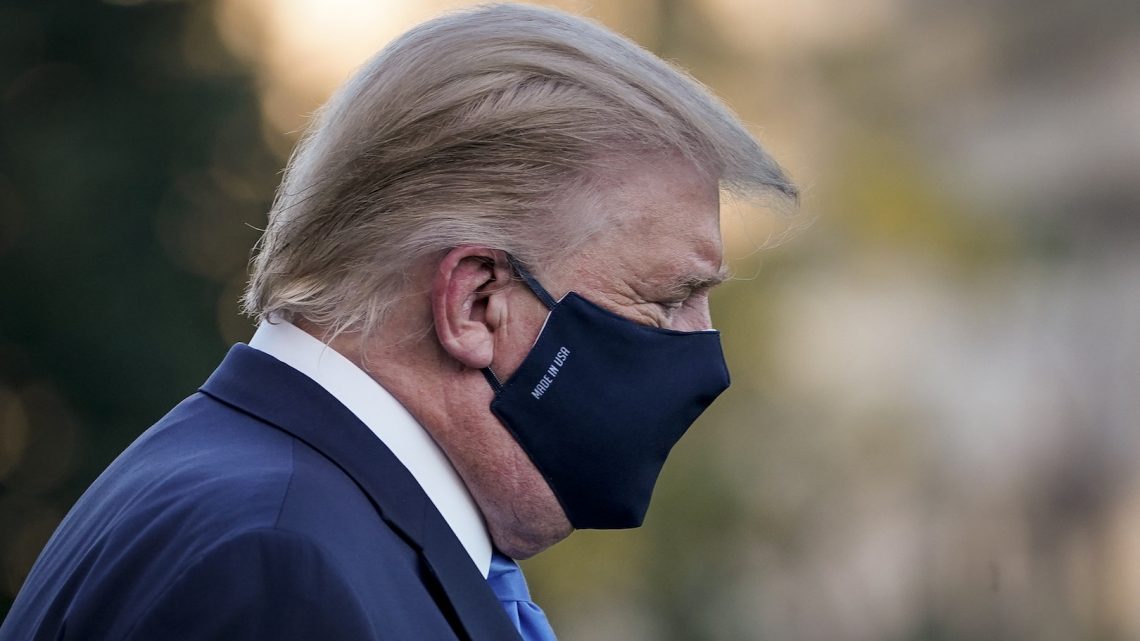
Trump’s Condition Is ‘Very Concerning’ and His Doctors Are Dodging Questions
October 3, 2020President Trump’s vital signs have been “very concerning” and he is not yet on a clear path to recovery, White House Chief of Staff Mark Meadows told assembled reporters outside Walter Reed hospital Saturday.
The dire assessment appeared directly at odds with the rosy, evasive, and contradictory picture painted by the president’s doctors only moments before.
“The president’s vitals over the last 24 hours were very concerning and the next 48 hours will be critical in terms of his care,” Meadows told the White House press pool. “We’re still not on a clear path to a full recovery.”
The statement capped a period of mixed messaging, spiraling confusion, and anxiety over the president’s health, as the White House avoided presenting a clear medical portrait of the commander in chief who was admitted to the hospital Friday after having been diagnosed with COVID-19.
Meadows’ remarks were initially attributed to an unnamed person familiar with the president’s health by the White House press pool. But a video feed of the moment clearly showed Meadows approaching reporters and asking to speak off the record, and The Washington Post and Associated Press later identified him by name. The White House did not dispute that the comments were made by Meadows.
Doctors who addressed reporters on Saturday morning gave a new timeline suggesting Trump may have been diagnosed as early as Wednesday afternoon, and dodged repeated questioning about whether he’s been on oxygen. The White House then said the doctors misspoke about exactly when Trump was first diagnosed.
“He’s not on oxygen today,” White House physician Sean Conley insisted outside of Walter Reed National Military Medical Center. But when reporters attempted to pin Conley down on whether Trump had ever received oxygen, he turned evasive.
“What’s today? Saturday? No, no,” he said. “Thursday, no oxygen. None at this moment, yeah, and yesterday with the team, while we were all here, he was not on oxygen.”
Requiring supplemental oxygen would suggest that Trump’s COVID-19 case had, at some point, been more severe than the White House let on. But, Conley instead said that Trump was doing “very well,” and that his symptoms were improving.
Minutes later, the New York Times reported Trump had received supplemental oxygen in the White House Friday morning after having had difficulty breathing.
Conley suggested on Saturday shortly before noon that the doctors were “72 hours into the diagnosis,” a timeline that appeared to suggest Trump might have been diagnosed as early as Wednesday around lunchtime. That would be much earlier than anyone has previously acknowledged. Trump first announced his positive test after midnight on Friday morning.
A White House official who asked not to be identified insisted to VICE News that the doctor misspoke, and that he meant to say that Saturday was “day 3” — following a diagnosis late Thursday, and an initial treatment administered shortly after that.
The White House later released a statement attributed to Conley in which the doctor affirmed he meant to say three days instead of 72 hours, and stating Trump’s antibody cocktail was administered on Friday, Oct. 2.
The exact details remained foggy, however, as the president’s medical crisis careened on in a haze of uncertainty.
Conley, flanked by pulmonary and critical care specialists, infectious disease physicians, nurses, an anesthesiologist, and more, said he’d recommended that Trump be brought to Walter Reed Friday as a “precautionary measure.” The president previously exhibited symptoms including a mild cough, nasal congestion, and fatigue, but hadn’t had a fever since Friday morning, Conley said.
He declined to say what his fever actually was, and said Trump likely wouldn’t need oxygen moving forward. He offered that he was “extremely happy” with Trump’s progress.
Trump was administered an experimental antiviral therapy from Regeneron to bolster his immune system’s ability to fight the infection, and was starting a five-day course of Remdesivir.
Another physician on the president’s medical team, Brian Garibaldi, said Saturday that Trump received a “special antibody therapy” 48 hours before the press conference, which would’ve also put the treatment well before Trump alerted the public to his positive test result.
The first lady is also experiencing mild symptoms but has not been hospitalized. She said in a tweet Friday that she’s looking forward to a “speedy recovery.” While the president has tweeted far less than usual since he announced his diagnosis, he said on the social media platform late Friday that he was doing alright.
“Going welI, I think! Thank you to all. LOVE!!!” Trump wrote.

